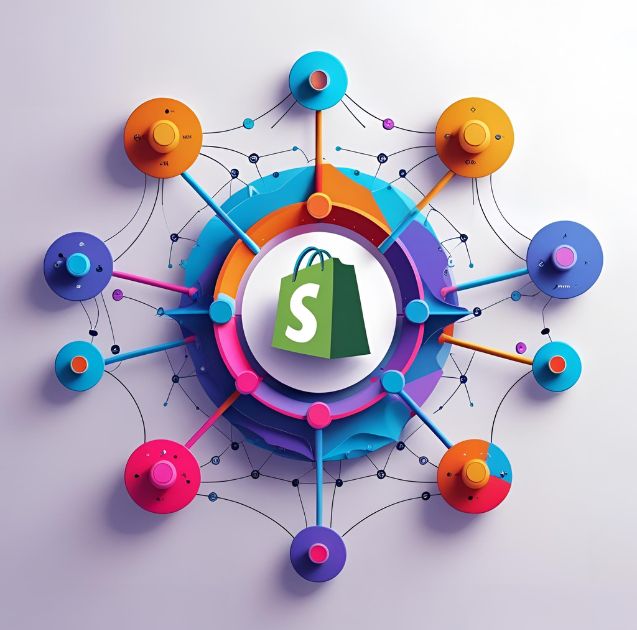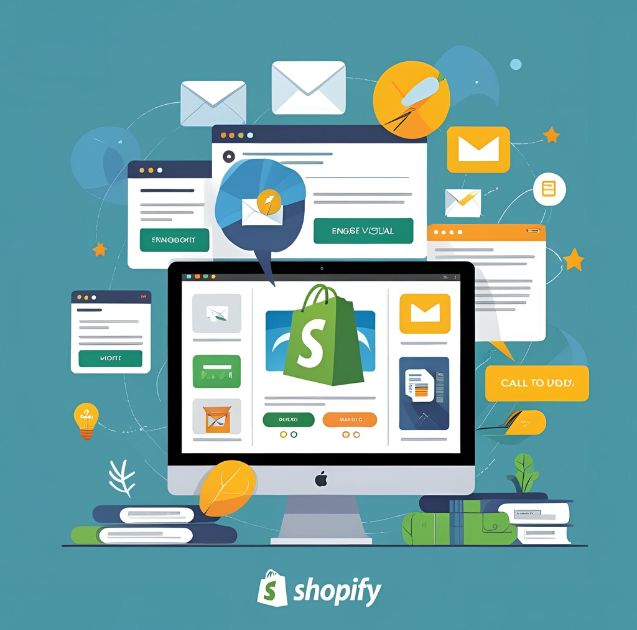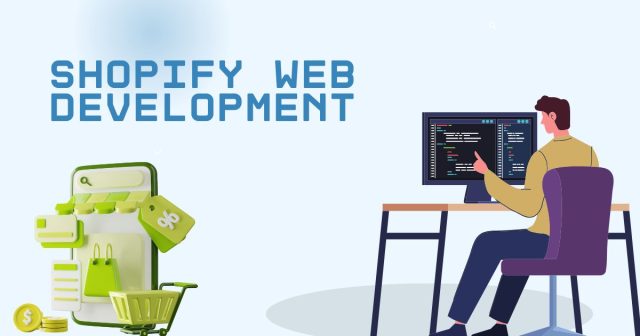Building a successful online store requires more than just selecting products and setting up payment methods. Effective Shopify web development combines technical expertise with strategic thinking to create stores that not only look professional but also convert visitors into loyal customers.
Whether you’re launching your first e-commerce venture or looking to optimize an existing Shopify store, understanding the fundamentals of web development on this platform can make the difference between a mediocre online presence and a thriving business. From custom theme development to advanced functionality implementation, the right approach to Shopify development sets the foundation for long-term success.
This comprehensive guide will walk you through everything you need to know about Shopify web development, including essential features, development best practices, and how to integrate powerful marketing tools like email campaigns to maximize your store’s potential.
Understanding Shopify Web Development Fundamentals

Shopify web development encompasses the technical processes involved in creating, customizing, and optimizing e-commerce stores on the Shopify platform. Unlike traditional web development, Shopify development works within a specific ecosystem that provides built-in e-commerce functionality while allowing for extensive customization.
The platform uses Liquid, its proprietary templating language, which enables developers to create dynamic content and customize store layouts. This templating system works alongside HTML, CSS, and JavaScript to deliver responsive, feature-rich online stores.
Modern Shopify development focuses on three core areas: frontend user experience, backend functionality, and third-party integrations. Each component plays a crucial role in creating stores that perform well across all devices and provide seamless shopping experiences.
Essential Features for Shopify Store Development
Mobile-First Design
With mobile commerce accounting for a significant portion of online sales, responsive design isn’t optional. Effective Shopify web development prioritizes mobile optimization from the ground up, ensuring your store functions flawlessly on smartphones and tablets.
Mobile-first development means designing for smaller screens initially, then scaling up for larger devices. This approach typically results in faster loading times and better user experiences across all platforms.
Performance Optimization
Page loading speed directly impacts conversion rates and search engine rankings. Professional Shopify development includes image optimization, code minification, and strategic use of apps to maintain optimal site performance.
Consider implementing lazy loading for images, optimizing CSS and JavaScript files, and regularly auditing your store’s performance using tools like Google PageSpeed Insights.
SEO-Ready Architecture
Search engine optimization should be built into your store’s foundation rather than added as an afterthought. This includes proper URL structures, meta tag implementation, and schema markup for product pages.
Technical SEO elements like XML sitemaps, robots.txt files, and canonical URLs help search engines understand and index your store effectively.
Custom Theme Development vs. Template Modification
When to Choose Custom Development
Custom Shopify theme development offers unlimited flexibility and unique branding opportunities. This approach works best for businesses with specific design requirements, complex functionality needs, or established brand guidelines that don’t align with existing themes.
Custom development also ensures your store stands out from competitors who might be using similar templates. However, it requires more time and budget investment compared to modifying existing themes.
Optimizing Existing Themes
For many businesses, customizing pre-built themes provides an excellent balance of functionality and cost-effectiveness. Quality themes from the Shopify Theme Store offer solid foundations that can be modified to match your brand requirements.
When working with existing themes, focus on customizing colors, fonts, layout elements, and adding necessary functionality through careful code modifications or compatible apps.
Integrating Shopify Email Marketing

Building Customer Relationships
Email marketing remains one of the most effective channels for e-commerce businesses. Shopify web development should include seamless integration with email marketing platforms to capture leads and nurture customer relationships.
Shopify Email Marketing tools allow you to create automated campaigns, segment customers based on purchasing behavior, and design branded email templates that match your store’s aesthetic.
Automated Email Campaigns
Professional Shopify development includes setting up automated email sequences for abandoned cart recovery, welcome series for new subscribers, and post-purchase follow-ups. These automated campaigns work around the clock to recover potentially lost sales and encourage repeat purchases.
Consider implementing email capture forms strategically throughout your store, such as exit-intent pop-ups, newsletter signup incentives, and post-purchase email collection.
Personalization and Segmentation
Advanced Shopify email marketing leverages customer data to create personalized experiences. Segment your email list based on purchase history, geographic location, or engagement levels to send more relevant messages that drive higher conversion rates.
Dynamic content in emails can showcase products similar to previous purchases or highlight items left in shopping carts, creating more engaging and effective email campaigns.
Advanced Shopify Development Techniques
Custom App Development
Some businesses require functionality that existing apps can’t provide. Custom Shopify app development allows you to create bespoke solutions tailored to your specific business processes.
Custom apps can handle unique inventory management needs, complex pricing structures, or specialized customer account features that enhance the user experience.
API Integration
Shopify’s robust API system enables integration with external services like accounting software, inventory management systems, and marketing platforms. Professional web development ensures these integrations work seamlessly without compromising store performance.
API integrations can automate many business processes, reducing manual work and improving data accuracy across your business systems.
Headless Commerce Implementation
Headless commerce separates the frontend presentation layer from the backend e-commerce functionality, offering greater flexibility in how customers interact with your store. This approach works well for businesses needing custom mobile apps or unique user interfaces.
While headless development requires more technical expertise, it provides unlimited customization possibilities and can improve site performance through optimized frontend technologies.
Testing and Quality Assurance
Cross-Browser Compatibility
Professional Shopify web development includes thorough testing across different browsers and devices. This ensures all customers have consistent experiences regardless of their technology preferences.
Test your store on popular browsers, including Chrome, Firefox, Safari, and Edge, paying special attention to checkout processes and mobile functionality.
Performance Monitoring
Implement ongoing monitoring to track site performance, identify potential issues, and ensure your store continues operating smoothly as you add new features or content.
Regular performance audits help maintain optimal loading speeds and user experiences as your store grows and evolves.
Frequently Asked Questions
How long does Shopify web development typically take?
Development timelines vary based on project complexity. Simple theme customizations might take 2-4 weeks, while custom theme development or complex functionality implementation can take 8-12 weeks or longer.
Can I integrate my existing email marketing platform with Shopify?
Yes, Shopify integrates with most major email marketing platforms, including Mailchimp, Klaviyo, and Constant Contact. These integrations allow for automated data syncing and advanced segmentation capabilities.
What’s the difference between Shopify and Shopify Plus development?
Shopify Plus offers additional features like advanced analytics, higher API limits, and access to exclusive apps. Development for Plus stores can leverage these enhanced capabilities for more sophisticated functionality.
Do I need coding knowledge to manage my Shopify store after development?
Basic store management doesn’t require coding knowledge. However, understanding fundamental concepts helps when making minor adjustments or communicating with developers about future modifications.
Building Your E-commerce Success Story
Effective Shopify web development combines technical expertise with strategic business thinking. By focusing on user experience, performance optimization, and integrated marketing tools like email campaigns, you create a foundation for sustainable e-commerce growth.
Success in e-commerce requires ongoing optimization and adaptation. Start with solid development fundamentals, then continuously test and improve your store based on customer feedback and performance data. Consider partnering with experienced Shopify developers who understand both the technical aspects and business implications of their development decisions.
Remember that great web development is an investment in your business’s future. Quality development work pays dividends through improved conversion rates, better search engine rankings, and enhanced customer experiences that drive long-term success.







